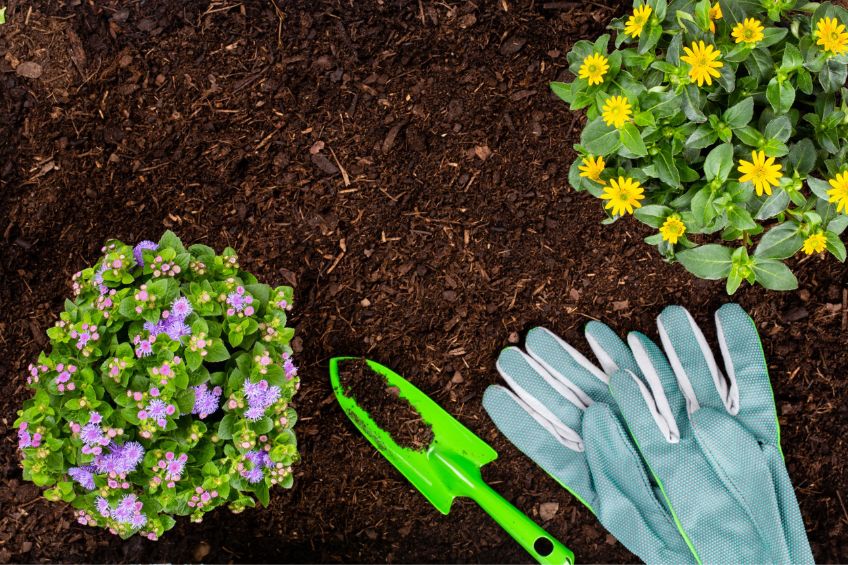

A vital component of designing and preserving a healthy garden landscape is mulching. Knowing the functions of mulch and how to quickly determine how much you need will equip you to safeguard your plants and encourage their best possible growth.

Mulch is a layer of material put to the soil's surface. It comes in a variety of forms, including organic materials like wood chips, bark, and straw, as well as inorganic materials like boulders or rubber. Mulch has a variety of applications: it conserves soil moisture, promotes soil fertility and health, decreases weed development, and improves the area's aesthetic attractiveness.
Start by defining the borders of your garden bed. If it is a normal rectangular or square shape, multiply the length by the width to get the square footage. To calculate the area of a circular bed, first measure the diameter, then halve it to get the radius, and finally use the pi formula or 3.14. For irregular shapes, try dividing the area into manageable shapes, calculating the area of each, and then adding the total.
Now, how do you translate this area into the amount of mulch required? A 2 to 4 inch layer of mulch is a good starting point. To calculate the cubic yards of mulch necessary for a 3-inch layer, divide the total square footage by 100. For example, a 200-square-foot bed would require roughly 2 cubic yards of mulch.
Organic mulches lose volume with time, but they also break down and add nutrients to the soil. Restocking mulch in your garden beds is typically required every year or every two years, based on the pace of decomposition and the particular conditions of your garden. Observe the mulch layer's thickness and add more as needed to keep it at the suggested 2 to 4 inches.
The benefits of using these practices are both short- and long-term. In addition to saving you time and money, accurately calculating and applying the proper amount of mulch also guarantees that you aren't over mulching, which can cause soil compaction and deplete plant roots' oxygen supply. Additionally, by adding more mulch on a regular basis, you may minimize soil erosion and weed growth in your garden and maintain its ongoing health.
Mulching is more than just a cosmetic choice; it is a long-term activity that keeps your garden healthy. By carefully measuring your garden bed area and determining the optimum amount of mulch, you may help your garden's ecosystem, assure the health of your plants, and lower your garden beds' maintenance requirements over time.
Now, don't worry if math isn't your thing. The Dirt Bag website has a useful coverage calculator that you may use at any time. We provide bulk and bagged mulch supplies, all of which may be delivered throughout Northern Utah. To get the quantity of any product we sell, such as topsoil, garden soil, compost, play sand, and landscape rock, just locate the green "How much do I need" calculator button in the upper right corner of the screen.
Your one-stop shop for all things gardening and landscaping is The Dirt Bag, situated in West Jordan, Utah. Order your Utah mulch delivery by phone or online right now.